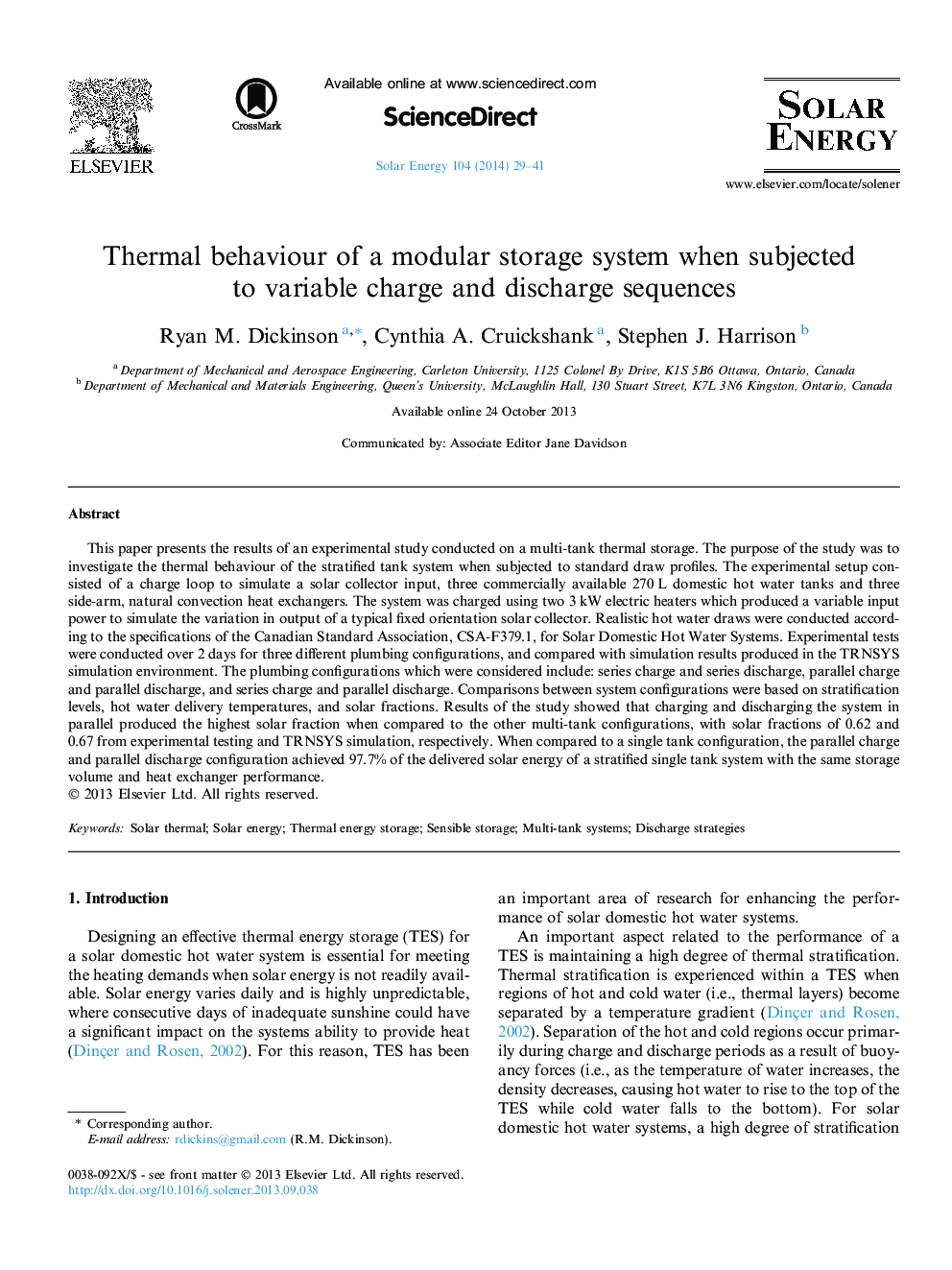| Article ID | Journal | Published Year | Pages | File Type |
|---|---|---|---|---|
| 1550016 | Solar Energy | 2014 | 13 Pages |
•A multi-tank system was evaluated under three charge and discharge configurations.•Variable input power charge and variable volume draw tests were performed.•Draw profiles of 900 L/day were scaled from the CSA-F379.1 Standard.•Experimental tests and TRNSYS simulations were conducted over 2 day test periods.•The parallel charge/discharge configuration achieved the highest solar fraction.
This paper presents the results of an experimental study conducted on a multi-tank thermal storage. The purpose of the study was to investigate the thermal behaviour of the stratified tank system when subjected to standard draw profiles. The experimental setup consisted of a charge loop to simulate a solar collector input, three commercially available 270 L domestic hot water tanks and three side-arm, natural convection heat exchangers. The system was charged using two 3 kW electric heaters which produced a variable input power to simulate the variation in output of a typical fixed orientation solar collector. Realistic hot water draws were conducted according to the specifications of the Canadian Standard Association, CSA-F379.1, for Solar Domestic Hot Water Systems. Experimental tests were conducted over 2 days for three different plumbing configurations, and compared with simulation results produced in the TRNSYS simulation environment. The plumbing configurations which were considered include: series charge and series discharge, parallel charge and parallel discharge, and series charge and parallel discharge. Comparisons between system configurations were based on stratification levels, hot water delivery temperatures, and solar fractions. Results of the study showed that charging and discharging the system in parallel produced the highest solar fraction when compared to the other multi-tank configurations, with solar fractions of 0.62 and 0.67 from experimental testing and TRNSYS simulation, respectively. When compared to a single tank configuration, the parallel charge and parallel discharge configuration achieved 97.7% of the delivered solar energy of a stratified single tank system with the same storage volume and heat exchanger performance.
